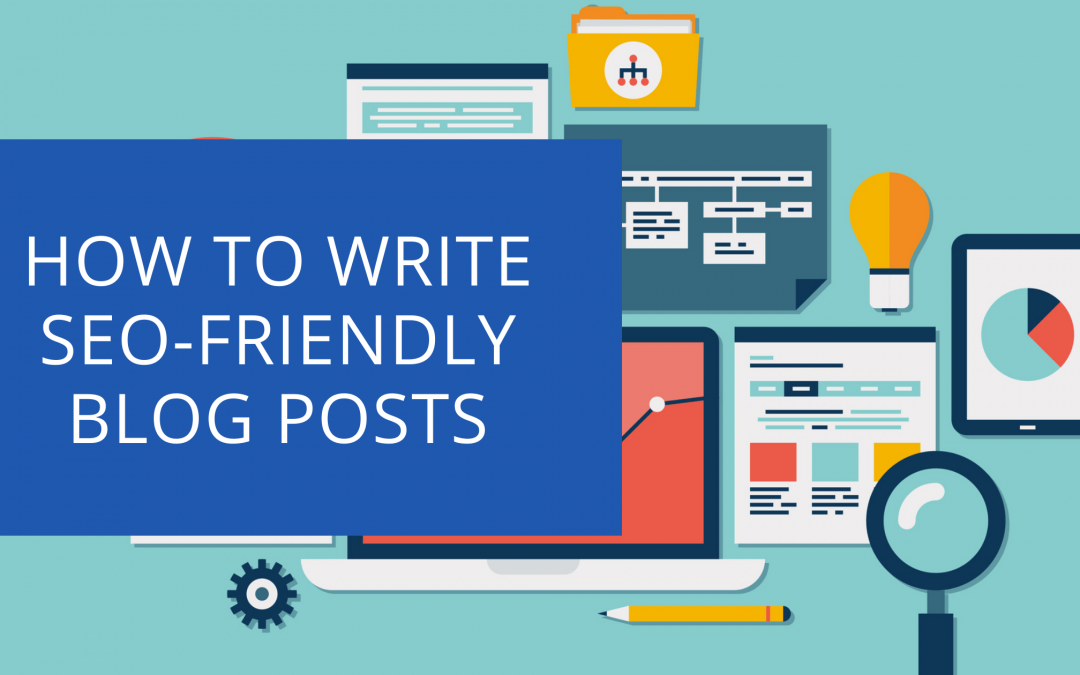One of the most powerful tools for online marketing is blogging. Blogging can help you build a strong brand, create valuable content and drive traffic to your website. One way to make sure that your blog posts are successful is by writing them in an SEO-friendly manner.
In this article, we will talk about 10 ways that you can write SEO-friendly blog articles so that people will find them when they search on Google or other search engines.
Contents
10 ways that you can write SEO-friendly blog posts
Tip #1: Choose the Right Keywords
One of the most important things that you can do to make your article SEO-friendly is to choose the right keywords. When you are choosing keywords, think about what people would be likely to search for to find your article.
Make sure that your keywords are relevant to your topic and use them throughout your article. You can also use a tool like Google AdWords Keyword Planner to help you find popular keywords related to your topic.
Tip #2: Write Titles That People Will Want To Click On
Your title is one of the first things that people will see when they search for your article on Google or other search engines. Make sure that it is catchy so that people will want to click on it.
 You should also try to include your keywords in the title of your article, but make sure that it doesn’t sound spammy or unnatural when you do this. If possible, use numbers and question marks in your titles because they tend to get more clicks than other words.
You should also try to include your keywords in the title of your article, but make sure that it doesn’t sound spammy or unnatural when you do this. If possible, use numbers and question marks in your titles because they tend to get more clicks than other words.
For example: “How To Get More Subscribers With These 11 Tips” is better than something like “Subscriber Numbers For Blogs”.
Some experts recommend writing a total of five different versions of the title for each blog post before choosing one as a final draft. You can experiment with different versions until you find what works best for Google search results and social media sites such as Facebook and Twitter.
Tip #3: Focus on the First Paragraph of Your Article
One way to make sure that your blog post is successful is by focusing a lot of attention on the first paragraph. People often read only the first few words in each sentence when they are searching for information online, so you need to include as much relevant content as possible here.
Include what people can expect from reading your article and keep it interesting enough that people will want to continue reading until the end. By including all of this important stuff up front, readers won’t have any reason not to fully engage with your blog post before moving on to something else.
This also helps Google understand better what your article is about because it reads hundreds or thousands of articles every day.
Tip #4: Use High-Quality Images and Videos on Your Blog Posts
One of the best ways to get people interested in your blog posts is by using relevant images or videos that are related to what you’re writing about. This makes it easier for search engines like Google to understand what your article is about, so be sure to include interesting pictures wherever possible.
A good image can also help with social media shares because more people will likely want to share an article if the content includes a compelling picture or video. Search engines may even show some Facebook photos at the top of its results pages when someone searches on keywords associated with them, which helps drive traffic back to your site even further than before!
These kinds of images can also help increase the time spent on your website, which is another factor that Google looks at when ranking websites.
Tip #5: Use Subheadings to Separate Your Content Into Easily Digestible Paragraphs
When you are writing an SEO-friendly blog post, it’s important to use subheadings to separate your content into easily digestible paragraphs. This makes it easier for people to read and understand what you’re saying and it also helps search engines understand the main points that you’re trying to make.
You should try to use a different keyword in each of your subheadings so that Google knows what the topic of each paragraph is. This will also help improve your article’s overall ranking on Google and other search engines.
Tip #6: Use Short Sentences to Keep People Engaged
 To keep people engaged with your blog post, you should try to use short sentences as much as possible. This makes it easier for readers to read and understand what you’re saying.
To keep people engaged with your blog post, you should try to use short sentences as much as possible. This makes it easier for readers to read and understand what you’re saying.
It’s also a good idea to break up long paragraphs into shorter ones so that the overall reading experience is more enjoyable. Not only will this help keep people interested in your article, but it will also make it easier for them to share it on social media sites like Facebook and Twitter.
Google likes websites that are easy to read because this indicates that they provide high-quality content to their users.
Tip #7: Use Quotes from Influential People in Your Industry
Adding quotes from influential people in your industry can help improve the overall quality of your blog post. This is because it shows that you have done your research and that you are serious about providing high-quality content to your readers.
Quotes also make for great social media shares because they provide a quick and easy way to get the point of your article across.
Be sure to include the name of the person who said the quote as well as a link back to their website or Twitter profile. This will help increase their exposure and could potentially lead to more traffic coming their way.
Tip #8: Don’t Rely on Keyword Research Tools to Write Your Article
 One of the biggest mistakes that a lot of people make is only relying on keyword research tools to write their blog posts. This can sometimes lead them astray and prevent them from writing an SEO-friendly blog post because they aren’t considering other factors as well.
One of the biggest mistakes that a lot of people make is only relying on keyword research tools to write their blog posts. This can sometimes lead them astray and prevent them from writing an SEO-friendly blog post because they aren’t considering other factors as well.
Instead, try to understand your target audience first by reading some articles online or asking friends what kind of content they typically enjoy consuming. Then you should come up with several interesting ideas for potential blog posts based on this information before doing any sort of keyword research at all!
By following these tips, not only will you have more fun creating new content, but it will also be easier for your readers to find it.
Tip #9: Use a Custom-Designed Graphic on Your Blog Post’s Landing Page
In order to make sure that people see your blog post’s title, description, and other SEO tags when they visit its landing page, you should try using a custom-designed graphic at the top of each article.
Google will use this image as an indicator of what type of content is inside so it helps improve search engine rankings even further if you choose something eye-catching!
You can also optimise this graphic by including some keywords in their file name or alt text — just don’t overdo it because too much optimisation could actually have a negative effect instead.
The goal here is to provide Google with as much information about your article’s content in the simplest way possible.
Tip #10: Use Related Keywords to Improve Your Article’s SEO Ranking
You should also try to use other related keywords throughout each of your blog posts so that Google can determine what topics you’re trying to cover and how they relate to one another.
This will help improve their overall search engine ranking, which means more people are likely to find them when searching for similar information on Google or other websites!
It doesn’t matter if it’s at the beginning or end of a sentence because you should include them whenever it makes sense based on everything else that is written within an individual blog post like this one. All you need to do is find a balance between using too many and not enough related keywords.
SEO-Friendly Blog Post FAQ
What is a good length for an SEO-friendly blog post?
As a general rule, try to aim for at least 1000 words per article. However, if you can’t manage that many then 500-600 words should be enough as long as the content is high quality. You can use a tool such as Surfer SEO to analyse the competition and show you an average of the word count of the competitors on the first page for your keyword.
Do I need to include keywords in every sentence of my blog post?
No, but including them where it makes sense will help improve your article’s overall SEO ranking. Just don’t overdo it or else it could hurt your readership.
Can I use images in my blog posts to improve their SEO ranking?
Yes! In fact, Google uses images as an indicator of what type of content is inside so it helps improve search engine rankings even further if you choose something eye-catching.
You can also optimise this graphic by including some keywords in their file name or alt text — just don’t overdo it because too much optimisation could actually have a negative effect instead.
Yes! Not only will doing this help improve your overall SEO ranking, but they’ll also come across more naturally for readers who are looking at other articles like these on similar topics. All you need to do is find a balance between using them too much and not enough.
We Offer SEO Services Nationwide
- Chester:https://mediakynect.co.uk/seo-chester/
- Wirral: https://mediakynect.co.uk/seo-wirral/
- Liverpool: https://mediakynect.co.uk/seo-liverpool/
- North Wales: https://mediakynect.co.uk/seo-north-wales/
- Wrexham: https://mediakynect.co.uk/seo-wrexham/
Conclusion
SEO-friendly blog posts are essential for any business that wants to increase its website’s traffic. By following these ten tips, you can make sure that your blog articles are not only easy to read but also rank high on search engine results pages.
So don’t wait any longer and start putting some of these tips into practice today!

